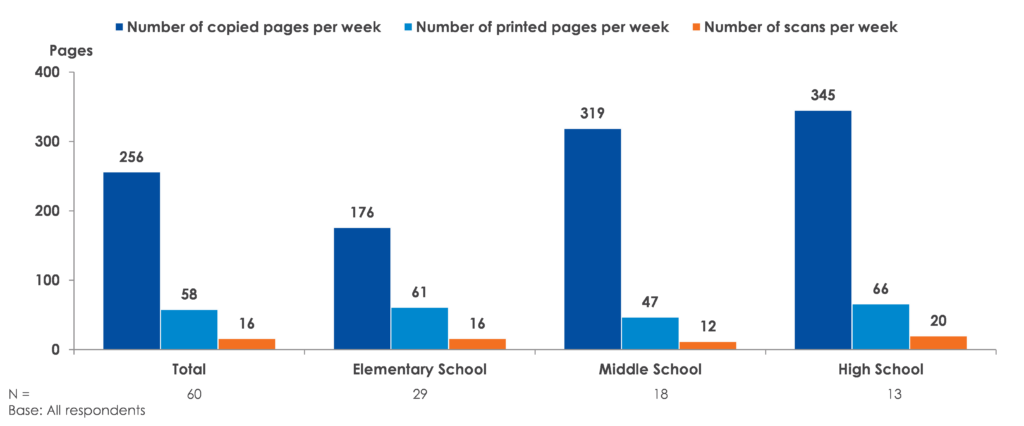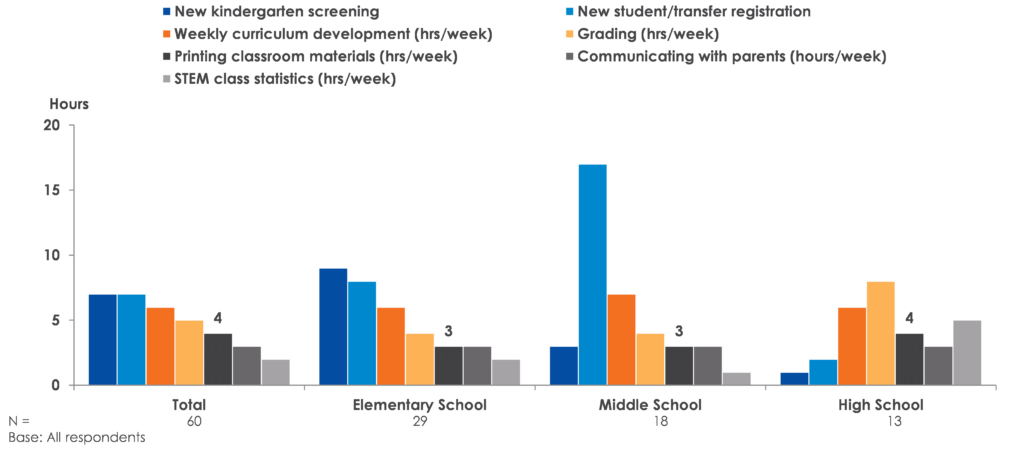Many schools rely heavily on paper for teaching students and handling administrative tasks. While paper may be associated with benefits around learning and information retention, in certain instances digital methods of communication and information storage may make more sense. This blog post will help schools determine whether digitization is worth pursuing in key areas.
Prevalence of paper in school environments
First, it may be beneficial to assess the amount of printing taking place in a specific school, department, and/or process. Keypoint Intelligence-InfoTrends research, for instance, shows that on average educators are copying 256 pages per week and printing 58 pages weekly.
This does not include the use of paper materials that have been supplied to the teachers. When considering all of the employees that may work in an individual school, it becomes clear that schools are quite paper-dependent.

Source: Business Process Automation: Education K-12 Survey
Satisfaction with paper-based processes
After taking stock of the amount of paper used in specific processes, consider how satisfied teachers, students, and parents are with these processes. To make an accurate assessment, you can survey them on this topic. Ask them about the benefits and drawbacks of using paper. Do they prefer using paper, or would a more digitized workflow be preferable?
Keypoint Intelligence-InfoTrends research does show that automation tends to improve workflows. For instance, educators say that automation enhances teacher communication with parents and students by 58%. Whether this is the case in your school should be investigated.

Source: Business Process Automation: Education K-12 Survey
Cost of paper-based processes
Copying and printing large quantities of documents can be expensive, especially if educators are using desktop devices with relatively costly ink or toner. One solution to this problem is acquiring or prioritizing the use of higher-end multifunction printers that drive down the cost of printing through lower-cost-per-page supplies.
Another possible solution is replacing some, most, or all of the paper with digital workflows. For instance, instead of asking parents to complete hardcopy permissions slips, these documents could be approved through email or app. As another example, students could read a short story online as opposed to in a printed workbook.
Time involved with paper-based processes
Related to the notion of cost, time spent printing and copying is also worth evaluating. Keypoint Intelligence-InfoTrends research shows that on average educators spend four hours per week printing classroom materials. When considering the length of the school year as well as all the educators that may be employed by the school, this can easily total thousands and thousands of hours each year.
Instead of printing, teachers could be spending their time improving upon curriculum, meeting with students, and completing other tasks that help ensure students are learning at the highest level. Of course, in order to truly save time any replacement digital workflows should be less time-consuming than their paper-based equivalents.
Download our solution overview & guide to overcome common education challenges and increase productivity in schools.